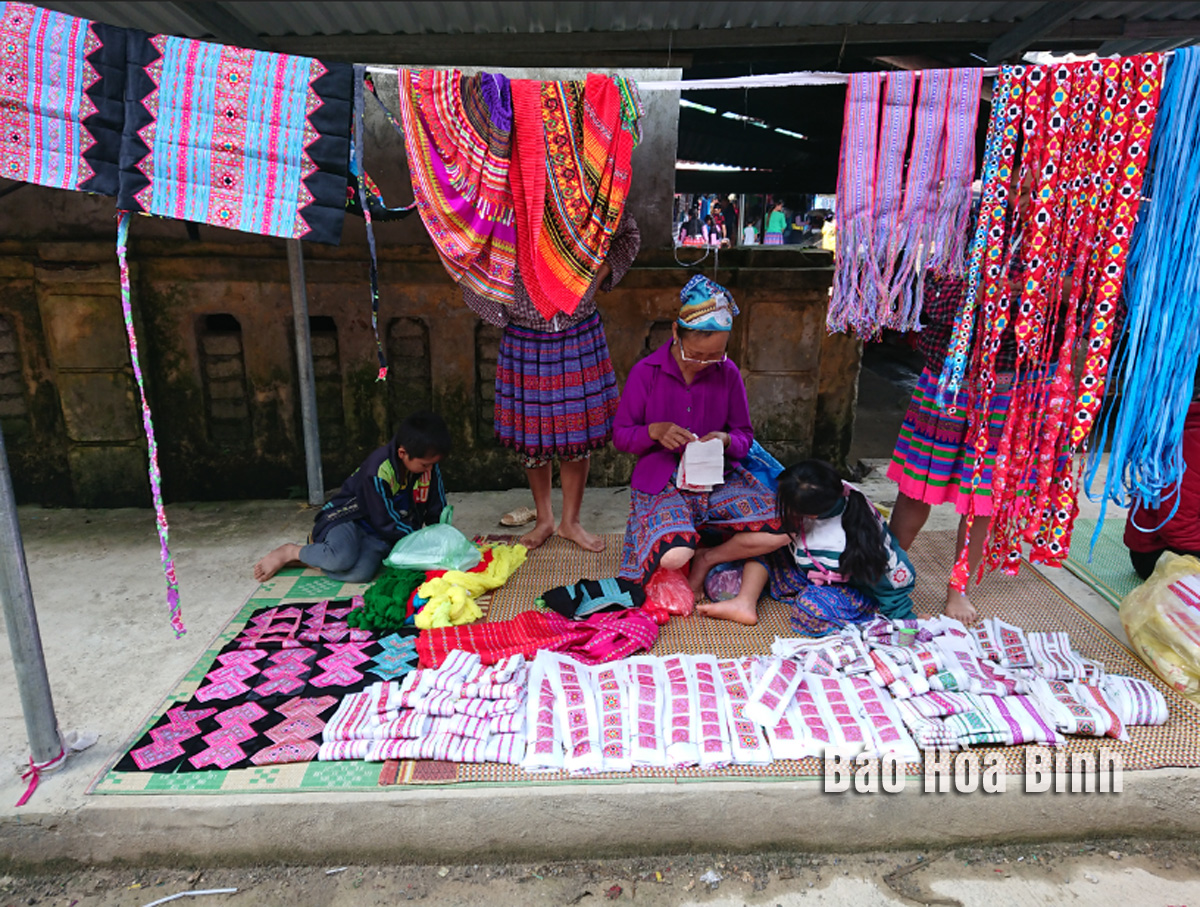
Hang Kia and Pa Co communes of Mai Chau district are home to a large number of Mong people, who are known for the traditional craft of brocade weaving - an essence of their ethnic group.
Mong women in Hang Kia commune of Mai Chau district still uphold the traditional brocade weaving to create costumes deeply imbued with their ethnic group's cultural identity.
Located about 40km from the district's centre, this region's mountainous terrain sits over 500 meters above sea level, with the highest peak reaching 1,500 meters in the Hang Kia - Pa Co Nature Reserve. For generations, local Mong women have meticulously maintained their heritage through the intricate process of brocade weaving.
Sung Y Mua, a woman in Hang Kia hamlet of Hang Kia commune, said Mong women take immense pride in creating their traditional clothing, a labour-intensive nd time-consuming process requiring skills, patience, and dedication. From growing flax to weaving on handlooms, every step is done manually. The colorful brocade patterns they produce are rich in cultural symbolism, reflecting the aspirations and unique culture of the Mong people.
In Hang Kia and Pa Co, it is common to see Mong women working on brocade during their daily routines. Even while walking to the market or fields, they can be seen spinning flax fibres into thread. The fabric is later boiled, washed, and sun-dried multiple times before it is ready for drawing and embroidery. The entire process, from weaving to embroidering intricate and colourful designs, takes about a month.
A wide range of products made from brocades are sold by Mong women at a common market of Hang Kia and Pa Co communes, Mai Chau district.
Traditionally, brocade fabrics were used to make everyday clothing for family members. However, with the rise of tourism, brocade products have become popular souvenirs, thus enhancing the region's appeal. Improved roads from Mai Chau's centre to Hang Kia and Pa Co have also boosted goods flows, enabling brocade products of Mong people to reach a wider market. Today, many households still maintain weaving looms, and some, like Vang Y Danh in Hang Kia hamlet of Hang Kia commune, have invested in industrial sewing machines to produce a wider range of brocade items.
Mai Chau district is committed to preserving this cultural heritage by promoting the traditional craft through tourism and socio-economic development projects aimed at supporting ethnic minorities.
Phong Phu commune, Tan Lac district of Hoa Binh province, is widely regarded as the cultural heartland of the Muong ethnic group. Among its many traditional communities, Luy Ai hamlet (formerly Ai hamlet) stands out as a rare location where the customs and way of life of the Muong Bi people remain largely intact.
The Truong Kha temple festival, a distinctive cultural event held every three years in Vu Ban township, Lac Son district, returned recently with vibrant rituals and folk traditions of the Muong people. Located next to the Buoi River in the Muong Trao fields, the Truong Kha Temple is dedicated to the three Kun Dol deities, revered for teaching farming techniques, irrigation, weaving, and protecting the harvest.
The demand for spaces serving community activities of residents in various areas across Hoa Binh city has been satisfied as local cultural houses now feature modern, spacious facilities thanks to the effective implementation of Resolution No. 49/NQ-HDND issued on December 28, 2021 by the city People's Council, which approved the plan for reorganising, converting, and allocating land for the construction, repair, and expansion of cultural houses in Hoa Binh’s villages and residential areas until 2025.
At the end of May, the Hoa Binh Provincial Ethnic Arts Troupe organized a series of performances for residents in Region 2 and Region 3 communes across the province. Bringing art to ethnic communities in remote, isolated, and especially disadvantaged areas has become a meaningful activity. These are not merely artistic performances but also journeys to disseminate cultural values, enrich spiritual life, and contribute to preserving the cultural identity of ethnic minorities.




